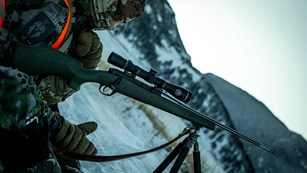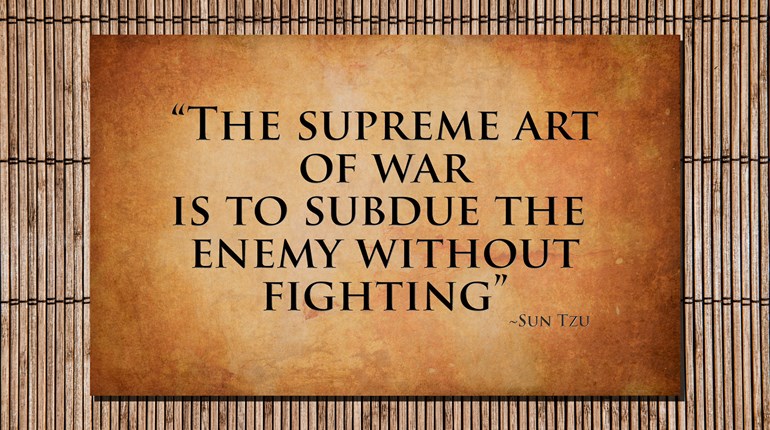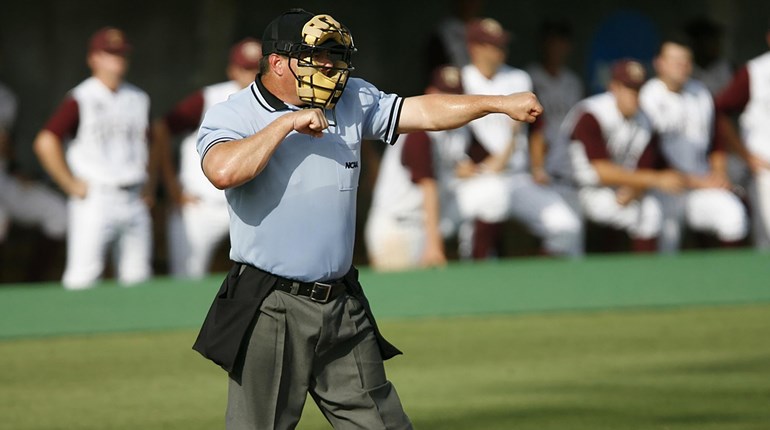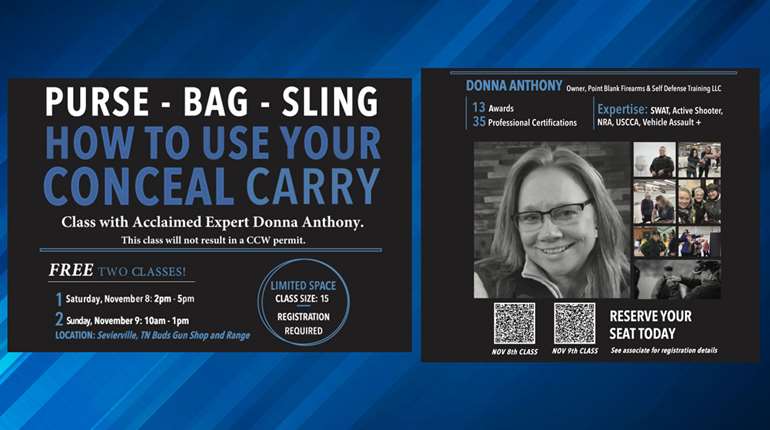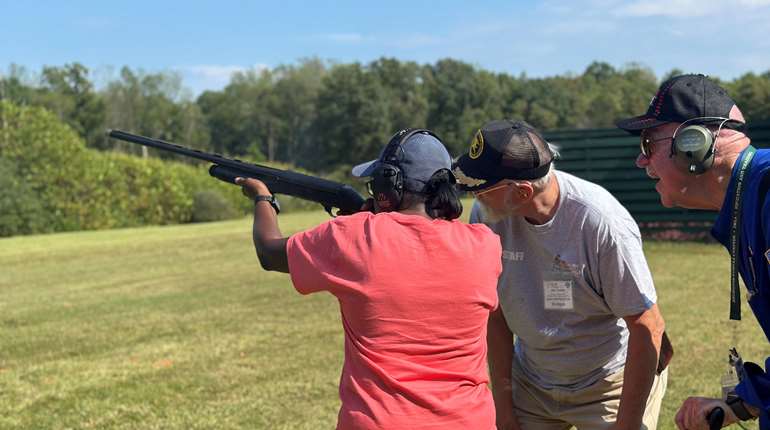
NRA Women know by now that they should remain in Condition Yellow in public, casually observing the world around them rather than being oblivious to their surroundings (Condition White). In the self-defense world, many refer to this as situational awareness. Being aware of what’s going on around us is a crucial skill to keeping ourselves safe and avoiding trouble before it starts, but unfortunately, situational awareness isn’t a thing we’re born with—it’s a skill we must develop and practice mindfully. These five tips will help you.
1. Put Your Phone Away
I know—it’s boring and cliché to tell people to put their phones down, but it’s an undeniable fact that you miss a whole lot of what’s happening around you when your face is buried in your phone. While you’re scrolling through Tik-Tok, how many people have moved in and out of your periphery? If you’re walking, riding or (God forbid) driving, how much ground did you cover that you really have no memory of? The fundamental basis of situational awareness is paying attention to your surroundings, and putting your phone down when you’re in public, or at least when you first enter a new public space until you get a feel for it, is the first step.
2. Look and Really See
Casually scan around you as you enter a room and periodically as you remain in it. When you’re walking down the street, through a grocery store or across a parking lot, scan left and right and up ahead of you—maybe even behind you occasionally. This isn’t difficult once you train your brain to put the phone down and do it, but the problem is that looking and seeing are not the same.
I don’t know about you, but more than once I’ve made the massive mistake of pulling up to a stop sign, jerking my head to the left and then to the right, putting my foot on the gas and pulling out into an intersection even as my brain is finally registering, “Oh crap, there’s a car.” When that happens—and I’m being more deliberate these days so it happens less frequently, I promise—it’s because I already knew what I wanted to do (pull out), and I knew what I was supposed to do to execute it safely (look left and right), but I simply went through the motions of looking without actually seeing. I moved too quickly, and my brain didn’t have time to send the “there’s a car there, don’t go yet” message to my foot.
Don’t make this mistake when you’re working on your situational awareness. A simple glance around isn’t going to make you aware of your surroundings if you don’t take a second to register what you’re actually seeing.
3. Know What to Look For
What are you looking for in that scan? You’re separating everything you see into categories: Normal/Ignore, Abnormal/Ignore, Abnormal/Keep an Eye On and, rarely, Immediate Problem.
Almost everyone you encounter or pass will be in the Normal/Ignore category. This is everyone else just riding the train or buying groceries or going about their day. They’re doing what normal people do in whatever space they’re in, and there’s no reason to think they pose any sort of threat, so you can safely ignore them unless their status changes.
Abnormal/Ignore are people you assess because they stand out, but you can immediately determine they’re also no threat to you. A toddler screaming in the cereal aisle is not displaying normal human behavior, but she poses no threat, so you can safely ignore her.
Abnormal/Keep an Eye On are the potential problems. This is anyone who seems out of place in a way that could potentially indicate a problem. A guy wearing a thick hoody, hood up, hands in pockets, in July. Three teenagers loitering in a parking lot (who does that?). A homeless woman muttering to herself and approaching passersby. All of these people are exhibiting behavior that’s outside the social norm for their location and have the potential to develop into a concern. They’re not a problem yet, but you should keep an eye on them and see what happens, and definitely give them a wide berth.
Immediate Problems are rare and obvious, and if you see anyone who’s clearly a safety concern, get out.
Your brain will do this categorizing very rapidly and automatically, so you won’t actually be checking each person off on a list, but knowing who you can safely ignore and who you should pay attention to is valuable in keeping you focused on the right things.
4. Make Note of Exits, Escape Routes and Hiding Spots
When you enter a room or any public space, as you’re completing your initial scan, make a mental note of where the exits are—including windows, fire escapes, stairwells and doors that lead to other rooms if not an exit. These are all your potential escape routes if there’s an emergency, whether that be an active shooter or a fire or just an overly chatty soccer mom you’d like to get away from.
Also pay attention to funnel points, or areas that everyone is likely to cram into in an emergency and cause a traffic jam. If there’s a problem and 100 people head to the main exit, but only two people can shove themselves out the door at a time, you’ll be stuck in that bottleneck unless you head for an alternate exit. If possible, you want to know at least two ways to get out of any space you enter, even including two paths to get back to your car from an outdoor space. And as they say on an airplane, keep in mind that the closest exit might be behind you.
If escape routes are slim, make note of potential hiding spots where you can find cover or at least some concealment in case a fight breaks out and people start throwing things or getting shoved around.
5. Beware Distractions
After your initial scan when you enter a space, you should continue to pay attention to what’s around you—tuning out the Normal/Ignores and the Abnormal/Ignores unless their status changes, make note of any new people entering the space or new developments up ahead. This doesn’t have to be people, either; it could be a wobbly bicyclist that looks as if she could sway off the bike path and into pedestrian traffic, or a rickety tree branch that might fall, or a red light ahead that could turn green at any moment.
All that stuff can get sorted into Ignore and Keep an Eye On categories, too, but the key is to avoid distractions. I’m not saying you shouldn’t talk to people or engage in anything while you’re out and about, but it’s hard to keep an eye on what’s going on around you if you’re focused on a barking dog, an adorable baby, your ringing phone or your screaming toddler. Do what you’ve got to do, and address those things as needed, but don’t get so sucked in that you become oblivious to everything else.
Situational awareness isn’t some mystical, unobtainable thing. It might not come naturally, but it can be learned, and at the heart of it, it’s really just about paying attention to what’s going on around you. Developing a few simple habits, like staying off your phone in public, scanning your surroundings, making notes of any potential problems, and always identifying exit routes will help you take charge of your personal safety and develop the type of simple situational awareness that will allow you to maintain Condition Yellow without stressing yourself out.








